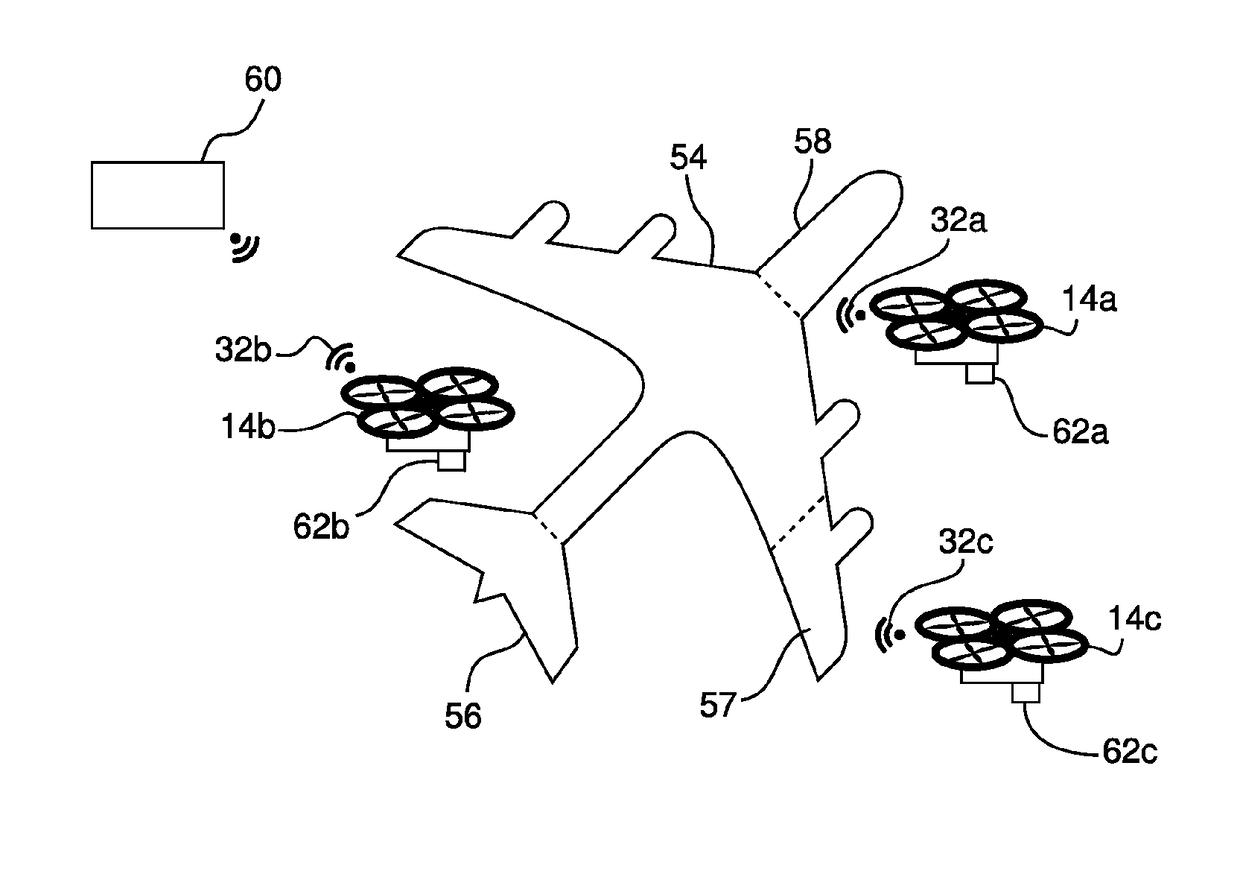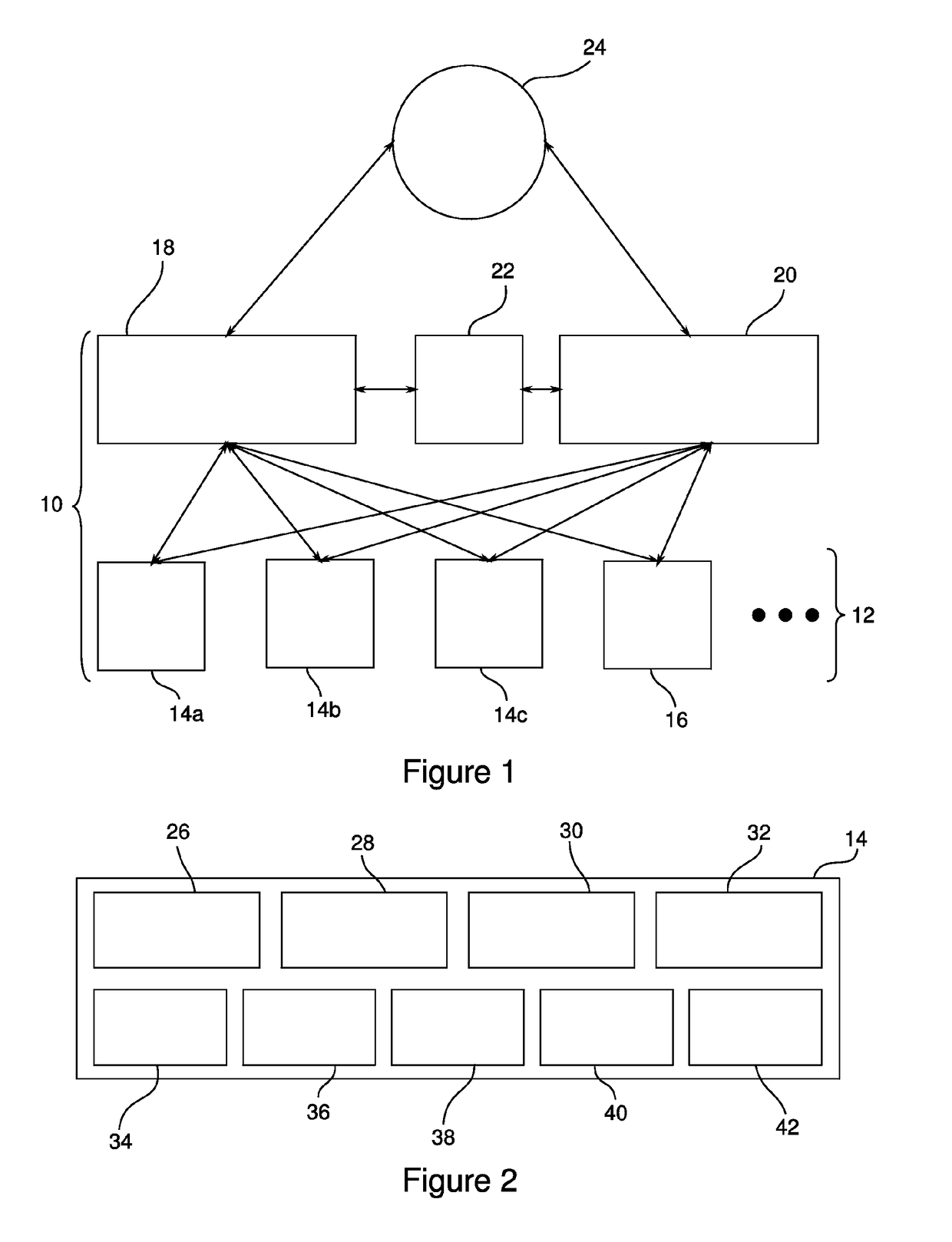System and method for automatically inspecting surfaces
a technology of automatic inspection and large objects, applied in the direction of process and machine control, vehicle position/course/altitude control, instruments, etc., can solve the problems of large objects, detection and locating defects, and general hard-to-reach surfaces, and achieve the effect of quick inspection of large surfaces
- Summary
- Abstract
- Description
- Claims
- Application Information
AI Technical Summary
Benefits of technology
Problems solved by technology
Method used
Image
Examples
Embodiment Construction
[0020]For this purpose, the invention relates to a system for automatically inspecting a surface of an object such as an aircraft, transport vehicle, building or engineering structure, said surface being liable to contain a defect, characterised in that it comprises a fleet, comprising at least one flying robot, each flying robot comprising:
[0021]a module for acquiring images of at least one portion of the surface to be inspected, and
[0022]a module for processing the acquired images, which module is suitable for providing information representative of the state of each inspected surface portion, which information is called the processing result,
[0023]the automatic inspection system further comprising a module for managing the fleet of robots, the management module being suitable for determining, from a model of the surface to be inspected, a set of displacement instructions and image acquisition instructions for each robot of the fleet.
[0024]An automatic inspection system according ...
PUM
 Login to View More
Login to View More Abstract
Description
Claims
Application Information
 Login to View More
Login to View More - R&D
- Intellectual Property
- Life Sciences
- Materials
- Tech Scout
- Unparalleled Data Quality
- Higher Quality Content
- 60% Fewer Hallucinations
Browse by: Latest US Patents, China's latest patents, Technical Efficacy Thesaurus, Application Domain, Technology Topic, Popular Technical Reports.
© 2025 PatSnap. All rights reserved.Legal|Privacy policy|Modern Slavery Act Transparency Statement|Sitemap|About US| Contact US: help@patsnap.com



